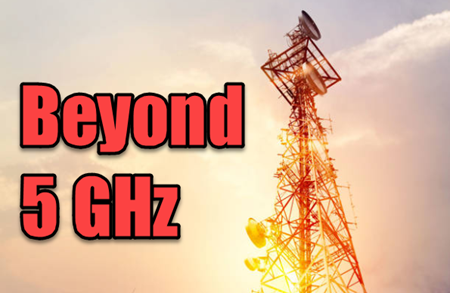Looking Ahead: The Future of 5 GHz & Beyond

Author: Mike Hoprich, Sales Manager at KP Performance Antennas
The 5 GHz band has been a tremendous resource ever since the Federal Communications Commission (FCC) opened it for unlicensed use back in 1989, along with the 2.4 GHz band. The wireless landscape has changed significantly since that time, though, and the band that was once thought to offer a near bottomless pit of spectrum is now getting congested.
Today, for instance, the 5 GHz band supports a wide variety of deployments including WiFi and the Internet of Things (IoT), Licensed Assisted Access and LTE-unlicensed solutions, and Unlicensed National Information Infrastructure (U-NII) applications — much more than it was originally supposed to accommodate.
The easy fix is to open other bands for unlicensed use, as the FCC is now trying. In October, the FCC voted unanimously to free 1,200 MHz of spectrum in the 6 GHz band, to make room for WiFi and other unlicensed technologies.
“When the Commission first made the 2.4-2.4835 GHz and 5.725-5.875 GHz bands available for unlicensed use under our Part 15 rules in 1989, few could have anticipated the explosion of innovation that followed,” the FCC explained in October. “These bands have become the focal points for wireless standards — such as WiFi, Bluetooth, and Zigbee — that enable seamless communication among and between countless wireless devices. Wi-Fi, in particular, has become indispensable for providing high data rate local area network connections for smart phones, tablets, mobile computers, and other devices to interconnect and access the Internet.”
As the FCC explains, this was done in an effort to accommodate America’s insatiable appetite for wireless broadband connections.
“This is placing high demand on commercial networks as well as systems that rely on unlicensed devices to deliver data to consumers,” the FCC continued. “According to Cisco, North American mobile traffic, including traffic offloaded onto unlicensed Wi-Fi devices and small cell networks, grew 44 percent in 2016 and is projected to grow at a near 35 percent compound annual growth rate through 2021.”
This begs the question, though: What can we do to enable interference-free communication for unlicensed devices, apart from leveraging surrounding bands? Just like we saw in 2.4 GHz, there will be a race to the bottom in 5 GHz as more and more competitors get into the space. This problem will come to the forefront within the next five years, and WISPs will be increasingly challenged to optimize available spectrum.
5 GHz Sectors Vs. Horns
One solution is to use narrow beam width sectors with interference mitigating technology to eliminate side lobes. While horn antennas allow for much denser installations due to the ability to allow frequency re-use, their reduced gain translates to reduced coverage areas. Of course, this means if you only use horns, you will need to build more towers to provide coverage in the same area as an operator using sector antennas. This will require hefty capital and operational expenditures. A more preferred choice is to use high-gain, small-angle sector antennas which are the preferred solution in macro deployments.
Beam steering could also help squeeze more out of the 5 GHz spectrum, as such devices essentially create “momentary” point-to-point links, thus minimizing effects of interference in the sector, which should improve the sector performance overall. This does not eliminate interference altogether, but it can prove to be a useful strategy.
KP Performance can work with your team to form a robust 5 GHz strategy. KP offers a full line of 5 GHz antennas (4.9 GHz - 6.4 GHz) including sector, parabolic, omni, feed horn, and reflector dish antennas. To learn more about how KP Performance can help your company optimize its 5 GHz performance, click here.